Argentinien mit unserem Womo
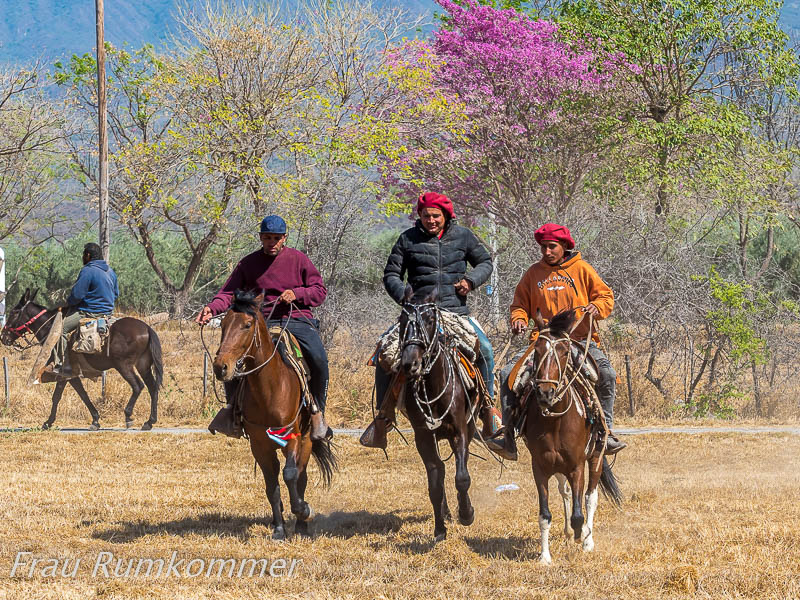
162 Tage, fast ein halbes Jahr, sind wir mit unserem Wohnmobil durch Argentinien gereist, im Zeitraum von Ende August bis Mitte April, also Winter-Ende, Frühling, Sommer und Herbst in Südamerika. Diese mehr als fünf Monate waren Teil einer neunmonatigen Rundreise durch das südliche Südamerika. In vier Etappen haben wir die gut 22 Wochen in Argentinien aufgeteilt; vorher und im Anschluss haben wir Uruguay bereist, zwischendurch in ebenfalls vier Etappen Chile. 121 Blog-Beiträge (einschließlich diesem) haben wir aus Argentinien veröffentlicht, mit einer Fülle an Informationen und sehr vielen, teils spektakulären Fotos.
Argentina with our camper
162 days, almost half a year, we travelled with our motorhome through Argentina, in the period from the end of August to mid-April, i.e. winter-end, spring, summer and autumn in South America. These more than five months were part of a nine-month round trip through southern South America. We divided the 22 weeks in Argentina into four stages; before and after that we travelled through Uruguay, and in between we also visited Chile in four stages. We published 121 blog posts (including this one) from Argentina, with a wealth of information and many, sometimes spectacular photos.
.
Reiseroute
Nach rund drei Wochen durch Uruguay sind wir erstmalig in Argentinien eingereist, am Stausee Salto Grande bei Concordia. Unsere ersten Ziele waren Wasserfälle, u. A. der längste Längswasserfall der Welt sowie einer der größten überhaupt, die Wasserfälle des Rio Iguazú, beide auf der Grenze zu Brasilien.
Von dort zu den Hochebenen und Schluchten in den nordwestlichen Provinzen Argentiniens haben uns unterwegs der Chaco Nationalpark und ein Meteoritenfeld begeistert. In den Provinzen Salto und Jujuy waren dann die indigene Ruinenstadt Quilmes, die Quebradas (Schluchten) de las Flechas, de las Conchas und de Humahuaca sowie der (Kaktus-)Nationalpark Los Cardones landschaftlich besonders spektakuläre Reiseziele.
Mit Orientierung an der berühmten Ruta 40 ging die Reise in Richtung Süden weiter, am Ostrand der Anden durch die Provinzen La Rioja, San Juan und Mendoza, jeweils mit sehenswerten Felslandschaften. Höhepunkt war hier schließlich der Cañon del Atuel bei San Rafael.
Itinerary
After about three weeks through Uruguay, we entered Argentina for the first time, at the Salto Grande reservoir near Concordia. Our first destinations were waterfalls, including the longest longitudinal waterfall in the world and one of the largest ever, the waterfalls of the Rio Iguazú, both on the border with Brazil.
From there to the high plateaus and canyons in the northwestern provinces of Argentina, we were thrilled by the Chaco National Park and a meteorite field on the way. In the provinces of Salto and Jujuy, the indigenous ruined city of Quilmes, the Quebradas (gorges) de las Flechas, de las Conchas and de Humahuaca as well as the (cactus) national park Los Cardones were particularly spectacular destinations.
With orientation on the famous Ruta 40, the journey continued south along the eastern edge of the Andes through the provinces of La Rioja, San Juan and Mendoza, each with rocky landscapes worth seeing. The highlight here was the Cañon del Atuel near San Rafael.
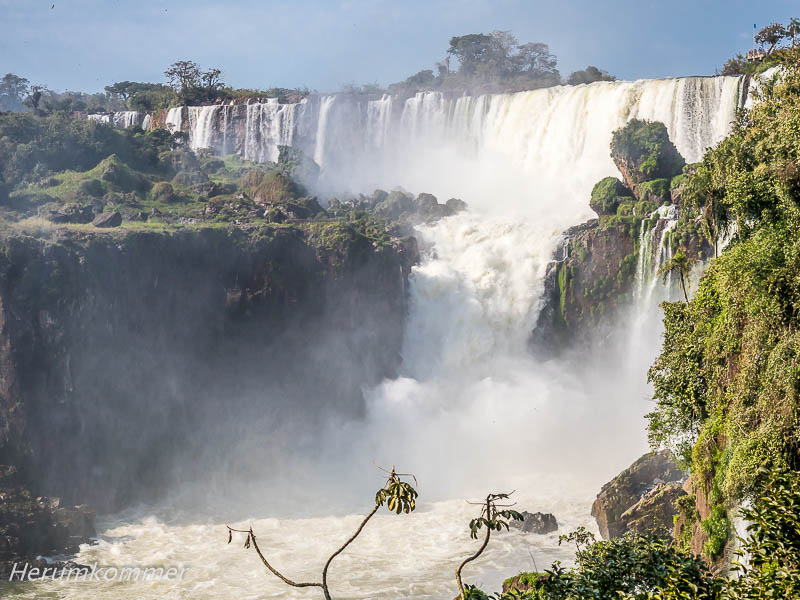
.
.
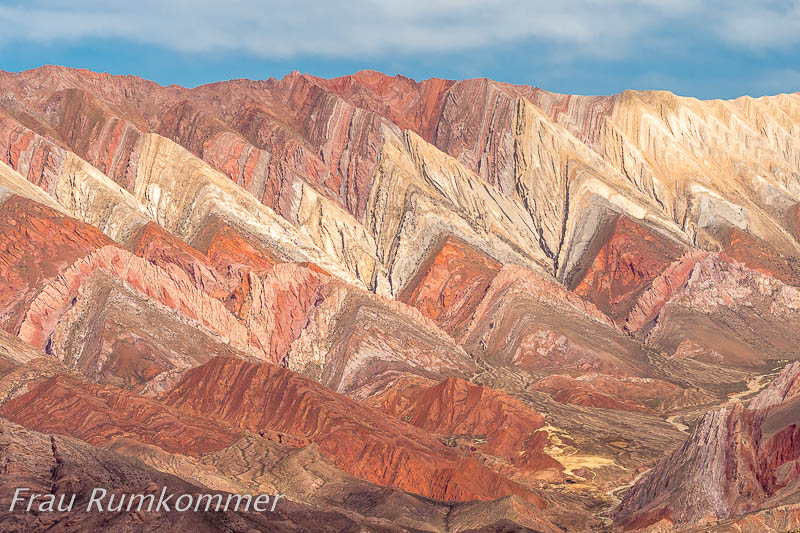
.
Dort haben wir die Richtung geändert und sind quer durch die Pampa nach Südosten zum Atlantik gefahren. Entlang der Atlantikküste Patagoniens gab es im Frühling hinreißende Tierbeobachtungen, u.A. Felsensittiche, Seelöwen und See-Elfanten, Wale mit Jungtieren, brütende Pinguine, Nandus und zahllose Guanakos sowie Magellan-Gänse und Flamingos. Auch außergewöhnliche Landschaften haben wir dort entlang der Ruta 3 gesehen.
Nach einer kurzen Etappe im chilenischen haben wir den argentinischen Teil Feuerlands bereist, über die südlichen Anden, bis zur südlichsten Stadt der Welt, Ushuaia, und zum Ende der Straße im Nationalpark Feuerland.
There we changed direction and drove southeast through the pampas to the Atlantic Ocean. Along the Atlantic coast of Patagonia, there were enchanting animal sightings in spring, including rock parakeets, sea lions and elephant seals, whales with young, breeding penguins, nandus and countless guanacos as well as Magellan geese and flamingos. We also saw extraordinary landscapes there along the Ruta 3.
After a short stage in Chile, we travelled through the Argentinean part of Tierra del Fuego, across the southern Andes, to the southernmost city in the world, Ushuaia, and to the end of the road in the Tierra del Fuego National Park.
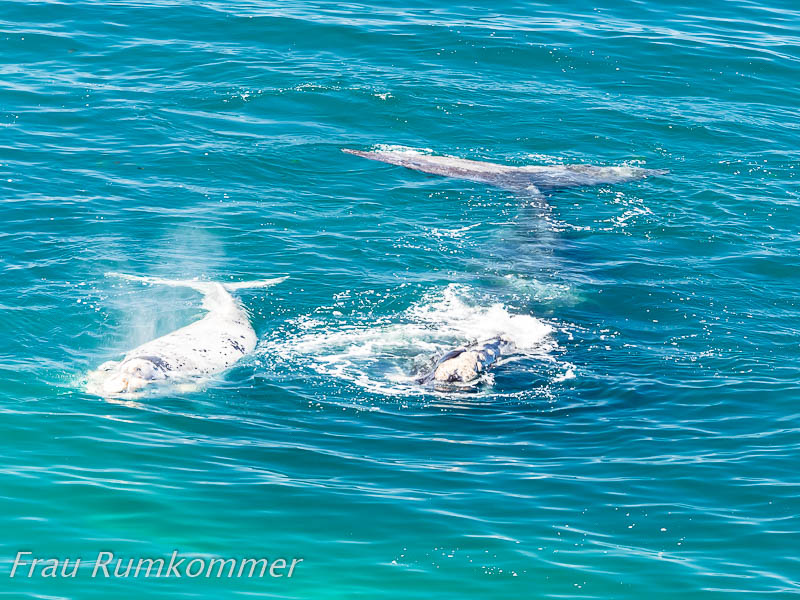
.
.
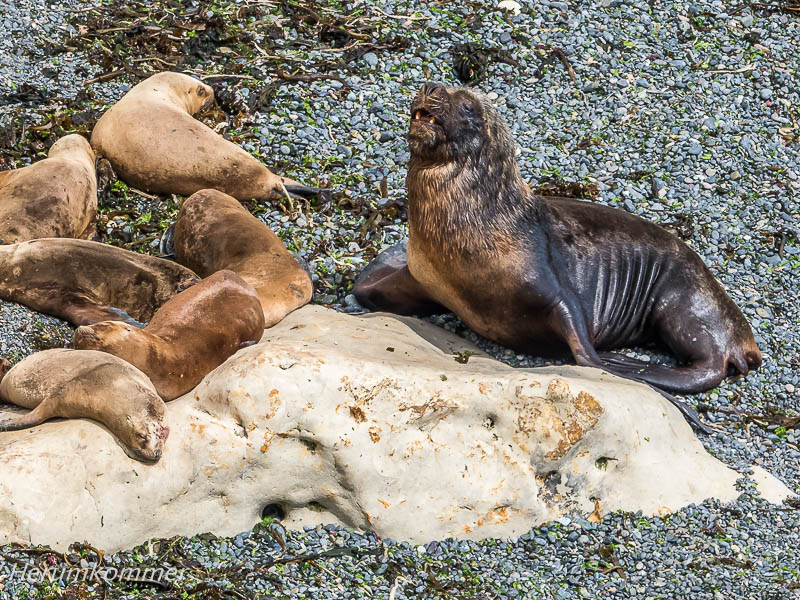
.
Wieder zurück durch das südliche chilenische Patagonien haben wir zu Beginn des Sommers den landschaftlich reizvollen argentinischen Südwesten Patagoniens bereist. Von Süd nach Nord waren hier der Perito-Moreno-Gletscher, El Chaltén mit dem FitzRoy-Massiv, und die Höhle der Hände einige der absoluten Höhepunkte der Reise. Dazu zählen auch die Landschaften entlang der Ruta 41 in der Provinz Santa Cruz, auf der wir zu Weihnachten gefahren sind.
Nach einem weiteren Abstecher durch Chile haben wir uns wieder an der Ruta 40 weiter nach Norden orientiert, im Hochsommer durch die patagonische Provinz Neuquén. Araukarien-Wälder, der Ausfall unserer Lichtmaschine sowie Erosions- und Vulkanlandschaften waren dort die Aufreger. In der Provinz Mendoza haben wir ein Vulkan- und Lava-Gebiet durchquert, sind vor einem Unwetter “geflohen”, auf der Straße der 365 Kurven über einen 3.000 m hohen Pass und über den ähnlich hohen Bermejo-Pass nochmal nach Chile gefahren.
Back through southern Chilean Patagonia, we toured the scenic Argentinean southwest Patagonia at the beginning of the summer. From south to north, the Perito Moreno glacier, El Chaltén with the FitzRoy massif, and the Cave of the Hands were some of the absolute highlights of the trip. They also include the landscapes along Ruta 41 in the province of Santa Cruz, on which we drove at Christmas.
After another detour through Chile, we again took the Ruta 40 further north, in high summer through the Patagonian province of Neuquén. Araucaria forests, the failure of our alternator and erosion and volcanic landscapes were the excitements there. In the province of Mendoza, we crossed a volcanic and lava area, „fled“ a storm, drove on the road of 365 curves over a 3,000 m high pass and over the similarly high Bermejo Pass again into Chile.
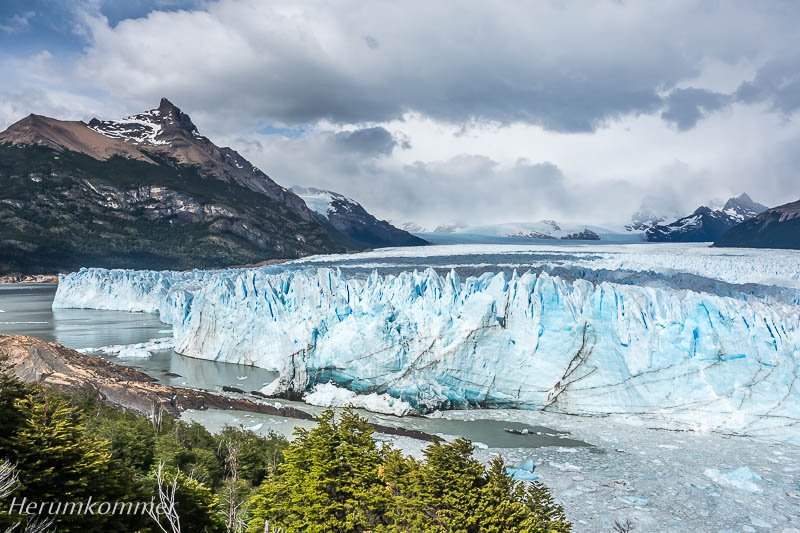
.
.
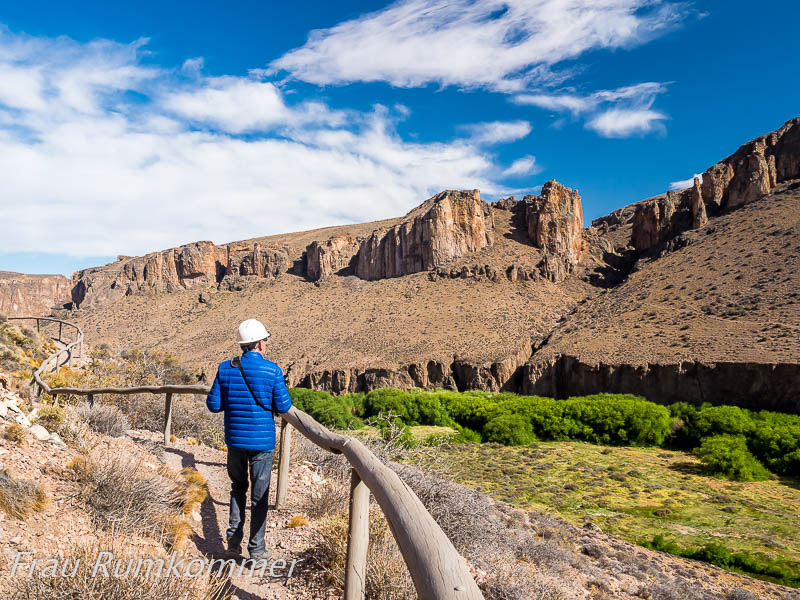
.
Wieder im Nordwesten, am 4.200 m hohen Jama-Pass, sind wir, von Chile kommend, zum letzten Mal nach Argentinien eingereist, erneut in die Provinz Jujuy. Wenig später haben wir die riesige schneeweiße Fläche der Salinas Grandes überquert. Dann haben wir unsere Aktivitäten rund 1.700 km weiter südlich, in den Provinzen La Pampa und Buenos Aires fortgesetzt. “Lost Places” und Naturschönheiten haben wir dort entdeckt. Schließlich war der Nationalpark El Palmar in der Provinz Entre Rios ein Highlight, bevor wir, wieder am Embalse Salto Grande, endgültig Argentinien verlassen haben.
Wie auf anderen Reisen, sind wir auch diesmal Umwege und Abstecher gefahren, um Leuchttürme für die Sammlung des Herumkommers zu fotografieren. Das war nicht jedesmal erfolgreich, weil viele Leuchttürme mit einem Landfahrzeug nicht oder nur unter Strapazen erreichbar sind.
Back in the northwest, at the 4,200 m Jama Pass, we entered Argentina for the last time, coming from Chile, again in the province of Jujuy. A little later we crossed the huge snow-white expanse of the Salinas Grandes. Then we continued our activities about 1,700 km further south, in the provinces of La Pampa and Buenos Aires. We discovered „lost places“ and natural beauties there. Finally, the El Palmar National Park in the province of Entre Rios was a highlight before we finally left Argentina again at the Embalse Salto Grande.
As on other trips, we drove detours to photograph lighthouses for the Aroundgetter’s collection. This was not successful every time, because many lighthouses are not accessible with a land vehicle, or only under strain.
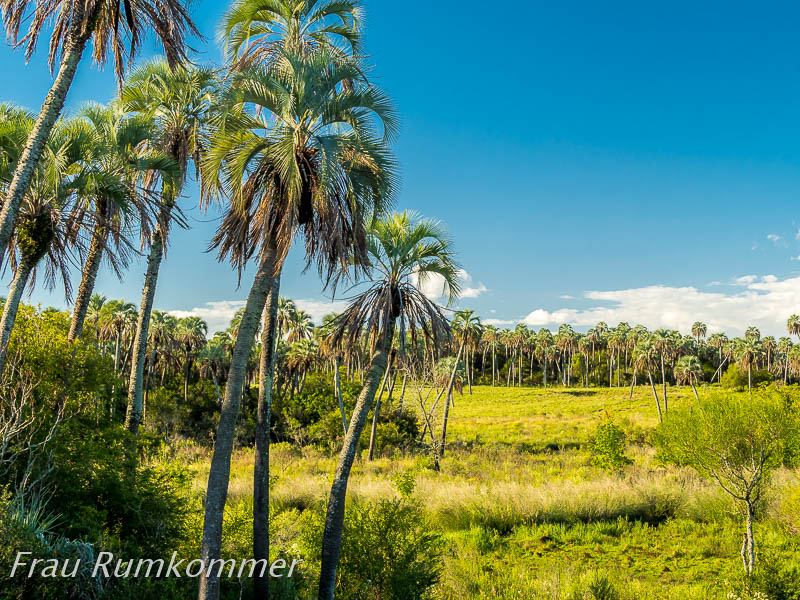
.
Klima und Wetter
In den nördlichen bereisten Regionen waren selbst das Ende des Winters und der Vorfrühling recht warm. In den Provinzen La Rioja, San Juan, Mendoza und La Pampa wurde es im Frühling schon heiß.
An der Atlantikküste und im Süden von Patagonien war der Frühling kühler. Patagonien könnte auch “Starkwind” heißen. Insbesondere in Feuerland wehte mehrfach ein so kräftiger Wind mit heftigen Böen, dass wir über lange Strecken nicht schneller als 60 km/h fahren konnten. Sonst wäre möglicherweise das Womo von der Straße geweht worden!
Naturgemäß wurde es auf der Route nach Norden wieder wärmer, zumal im Sommer. Regen war sehr selten. Am Ende des Sommers, nach einer mehrtägigen Hitzewelle im Landesinneren, hat es mehr als 24 Stunden mit nur ein paar kurzen Unterbrechungen sehr ergiebig geregnet.
Climate and weather
In the northern regions visited, even the end of winter and early spring were quite warm. In the provinces of La Rioja, San Juan, Mendoza and La Pampa, it was already hot in spring.
On the Atlantic coast and in the south of Patagonia, spring was cooler. Patagonia could be called „strong wind“. Especially in Tierra del Fuego, there were several times when the wind was so strong and gusty that we couldn’t drive faster than 60 km/h for long stretches. Otherwise the camper might have been blown off the road!
Naturally, it became warmer again on the route north, especially in summer. Rain was very rare. At the end of the summer, after a heat wave of several days in the interior, it rained very heavily for more than 24 hours with only a few short interruptions.
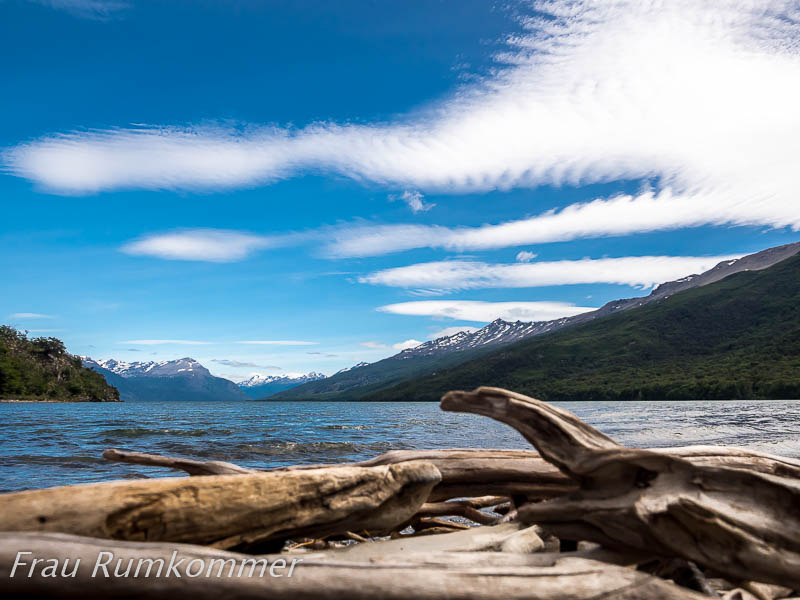
.
.
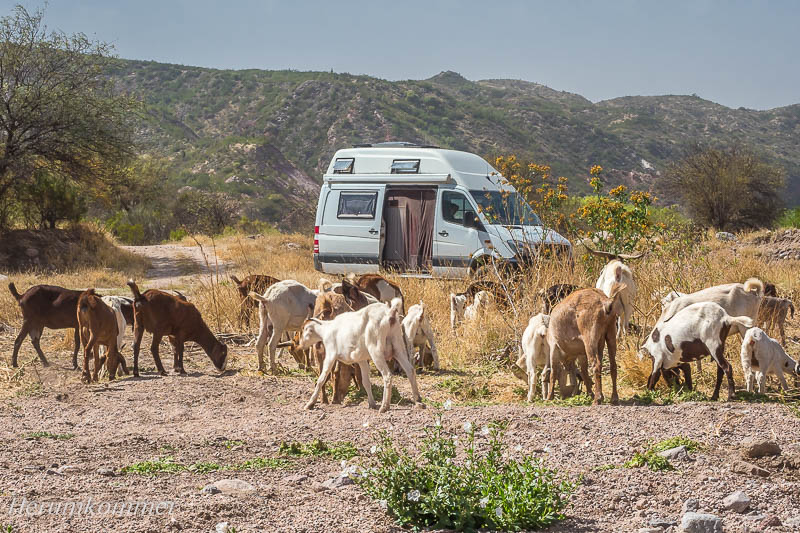
.
Reiseland Argentinien
Als angenehmes und völlig sicheres Reiseland haben wir Argentinien erlebt. Die Lenkradkralle haben wir nicht benutzt. Allerdings haben wir große Städte und insbesondere die Hauptstadt Buenos Aires gemieden. Vor der Stadt San Miguel de Tucumán, Hauptstadt der Provinz Tucumán, wurden wir wegen hoher Kriminalität gewarnt.
Unsere Spanisch-Kenntnisse beschränken sich auf ein paar Worte und Begriffe. Und obwohl es schwierig ist, jemanden zu finden, der Englisch spricht, geschweige denn Deutsch, war die notwendige Kommunikation kein Problem. Die Menschen in Argentinien sind uns uns freundlich, aufgeschlossen, entgegenkommend, oft enthusiastisch und immer hilfsbereit begegnet.
Diese Erfahrungen wurden bei Krims Krankenhausaufenthalt und Ad-Hoc-Operation noch übertroffen: Alle Ärzte und das weitere Krankenhauspersonal haben nicht nur absolut professionell gearbeitet, sie waren auch Vorbilder in Freundlichkeit und Fürsorge. Damit haben sie definitiv den Heilungsprozess begünstigt. Außerdem hatten wir die unvergleichliche Unterstützung durch die junge Ana (siehe Reisebekanntschaften), die wir seitdem zu unseren Freunden zählen.
Argentina as a travel destination
We experienced Argentina as a pleasant and completely safe destination. We did not use the steering wheel lock. However, we avoided big cities and especially the capital Buenos Aires. We were warned about the city of San Miguel de Tucumán, capital of the province of Tucumán, because of high crime rates.
Our knowledge of Spanish is limited to a few words and terms. And although it is difficult to find anyone who speaks English, let alone German, the necessary communication was no problem. We found the people in Argentina friendly, open-minded, accommodating, often enthusiastic and always willing to help.
These experiences were even surpassed during Krim’s hospital stay and ad hoc surgery: All doctors and other hospital staff not only worked absolutely professionally, they were also role models in kindness and care. Thus they definitely helped the healing process. We also had the incomparable support of young Ana (see Travelling acquaintances), whom we have counted among our friends ever since.
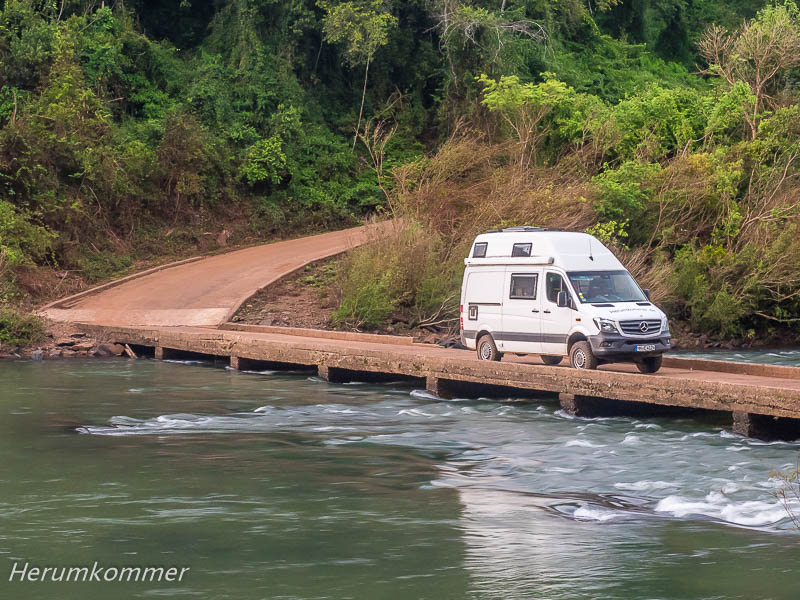
.
.
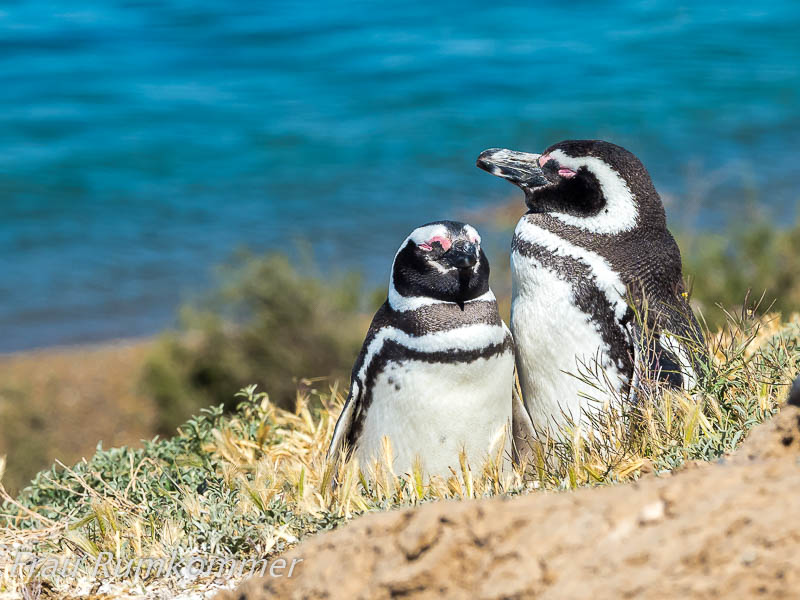
.
Die Verkehrsinfrastruktur in Argentinien ist schlechter, als z.B. im Nachbarland Chile. Sehr viele untergeordnete Straßen sind nicht ausgebaut, also Schotter- und Erdstraßen sowie herunter gekommene oder schlecht reparierte Asphaltstraßen. Schlaglöcher, auch gefährlich große und tiefe, sind allgegenwärtig. Wir kennen kein europäisches Land mit so schlechten Straßenverhältnissen.
Die argentinischen Autofahrer fahren überwiegend angenehm, rücksichtsvoll und geduldig, sie regen sich über nichts auf, hupen nicht. Sie sind aber auch jederzeit fähig, mit langsam Fahren beliebig viele andere Verkehrsteilnehmer aufzuhalten. Das sind sie ohnehin von Straßenkontrollen gewohnt, die es immer und überall gibt.
The transport infrastructure in Argentina is worse than in neighbouring Chile, for example. Very many subordinate roads are not developed, i.e. gravel and earth roads as well as dilapidated or poorly repaired asphalt roads. Potholes, even dangerously large and deep ones, are omnipresent. We don’t know any European country with such bad road conditions.
Argentinian drivers are mostly pleasant, considerate and patient, they don’t get upset about anything, they don’t honk. But they are also capable of holding up any number of other road users at any time by driving slowly. They are used to this anyway from road checks, which are always and everywhere.
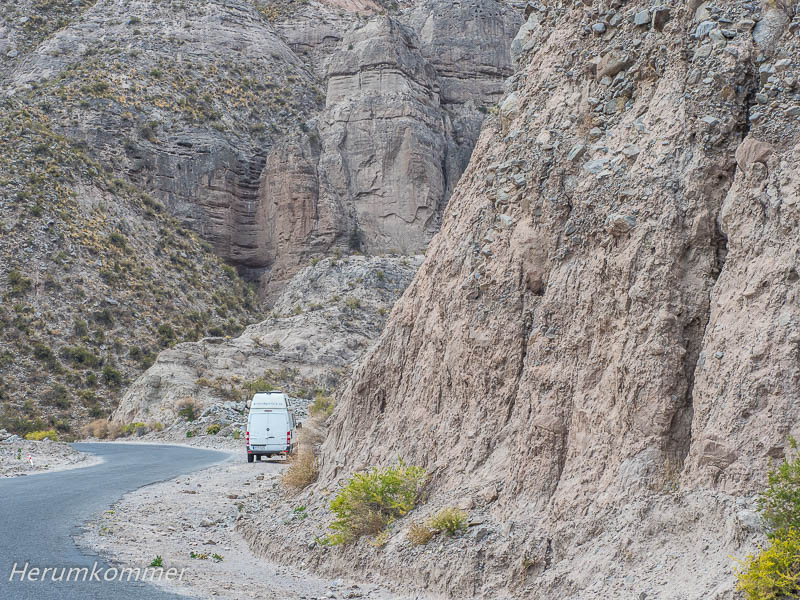
.
An Provinzgrenzen, möglichst auf beiden Seiten, an Ortseinfahrten aber auch überall sonst und ohne erkennbaren Grund stehen Polizeiposten und sorgen dafür, dass der Verkehr nicht fließt. Da gibt es Bundespolizei, Nationale Gendarmerie, Verkehrspolizei, Provinzpolizeien und Gemeinde- oder städtische Polizei. Sie alle haben ihre Checkpoints, permanente oder temporäre. Als Ausländer wurden wir nur selten angehalten. Auf meine Frage: „Do you speak english?“ konnten nur wenige Polizisten positiv antworten. Und so haben die meisten uns lieber durchgewunken, als sich zu blamieren.
Aber es gibt weitere Kontrollen. Insbesondere an einigen Provinzgrenzen werden Fahrzeuge kontrolliert, ob sie Obst, Gemüse oder Fleisch mit sich führen. In die Provinz Tucumán dürfen keine Zitrusfrüchte eingeführt werden. Damit sollen angeblich die dortigen Zitrusplantagen geschützt werden. Wir waren noch naiv und haben dem Kontrolleur unsere drei Orangen gezeigt. Als er sie konfiszieren wollte, habe ich ihm gesagt, das sei „gaga“ und „loco“ (verrückt). Krim behauptet, ich hätte dabei ein furchterregendes Gesicht gemacht. Der Kontrolleur hatte ein Einsehen und wir durften die Orangen behalten. Bei späteren Kontrollen haben wir immer mit Unschuldsmiene behauptet, wir hätten kein Obst, Gemüse oder Fleisch.
At provincial borders, on both sides if possible, at entrances to towns, but also everywhere else and for no apparent reason, there are police posts to ensure that traffic does not flow. There are federal police, national gendarmerie, traffic police, provincial police and municipal or city police. They all have their checkpoints, permanent or temporary. As foreigners, we were rarely stopped. When I asked, „Do you speak English?“ only a few police(wo)men could answer positively. And so most of them waved us through rather than make a fool of themselvs.
But there are other controls. Especially at some provincial borders, vehicles are checked to see if they are carrying fruit, vegetables or meat. No citrus fruits may be imported into the province of Tucumán. This is supposedly to protect the citrus plantations there. We were still naive and showed the inspector our three oranges. When he wanted to confiscate them, I told him that was „gaga“ and „loco“ (crazy). Krim claims that I made a scary face when I did that. The inspector had a real understanding and we were allowed to keep the oranges. At later controls, we always claimed with an innocent air that we had no fruit, vegetables or meat.
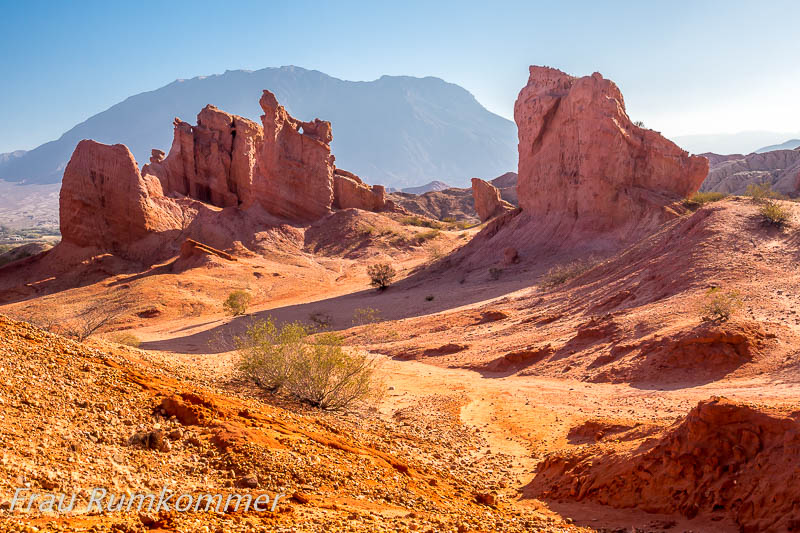
.
Während das Preisniveau für Kraftstoffe in Deutschland sehr hoch war, haben wir in Argentinien Diesel auch recht teuer getankt, aber billiger als zu Hause. Die meisten Tankstellen führen zwei Dieselsorten. Wir haben meistens die teurere Sorte getankt, in der Annahme, dass das für unseren Motor besser ist. Mit zunehmender Dauer der Reise haben wir gelegentlich mit dem billigeren Diesel gemischt. Unserem Motor hat das keine Probleme bereitet.
Eine nennenswerte Infrastruktur für Elektrofahrzeuge haben wir in Argentinien nicht wahrgenommen.
While the price level for fuel in Germany was very high, we also filled up with quite expensive diesel in Argentina, but cheaper than at home. Most petrol stations sell two types of diesel. We mostly filled up with the more expensive type, assuming that it would be better for our engine. As the trip progressed, we occasionally mixed with the cheaper diesel. This has not caused any problems for our engine.
We did not notice any significant infrastructure for electric vehicles in Argentina.
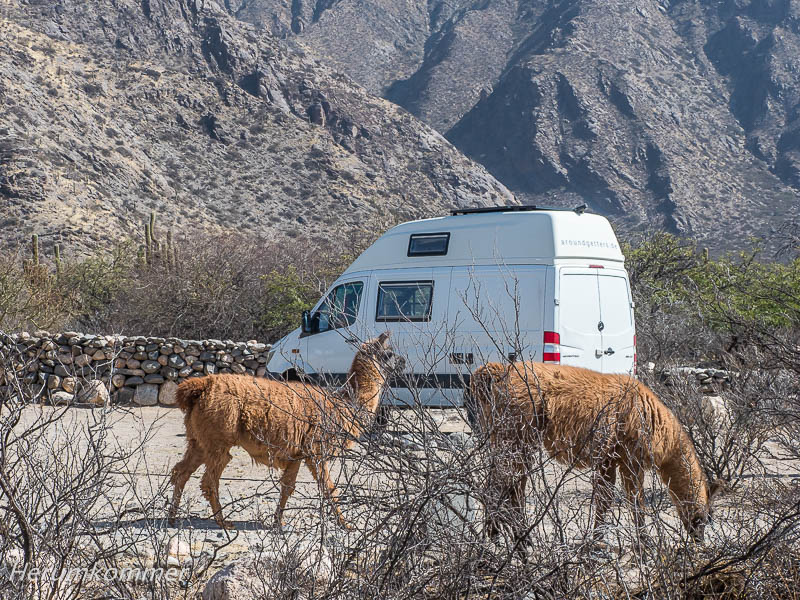
.
Mobiles Internet war in Argentinien preisgünstig. Die Netzabdeckung des Landes mit schnellem Internet ist sehr gut, in Stadt und Land. Beim Kauf einer SIM-Karte muss man sich registrieren lassen. Die SIM-Karte vom Netzbetreiber Claro gab es in deren Niederlassung kostenlos. Aber wir konnten sie dort nicht aufladen lassen. Dafür mussten wir in einen Kiosk oder ein anders kleines Geschäft, welches das anbietet. Dort, aber auch bei Claro selbst hatte niemand eine Ahnung von den aktuellen Tarifen. Als wir dann Internet hatten, haben wir herausgefunden, wie die Tarife und Angebote online zu finden und mit Kreditkarte zu buchen sind. Zeitweise hatten wir eine zweite SIM-Karte vom Netzbetreiber Personal. Das Prozedere war ähnlich. Allerdings war dort kein größeres Datenvolumen als 3 GB für vier Wochen zu bekommen.
Mobile internet was cheap in Argentina. The country’s network coverage with fast internet is very good, in town and country. When buying a SIM card, you have to register. The SIM card from the network operator Claro was available free of charge at their branch. But we couldn’t get it recharged there. For that, we had to go to a kiosk or another small shop that offers that. There, but also at Claro itself, nobody had a clue about the current tariffs. Once we had internet, we found out how to find the rates and offers online and how to book them with a credit card. At times we had a second SIM card from the network operator Personal. The procedure was similar. However, no larger data volume than 3 GB for four weeks was available there.
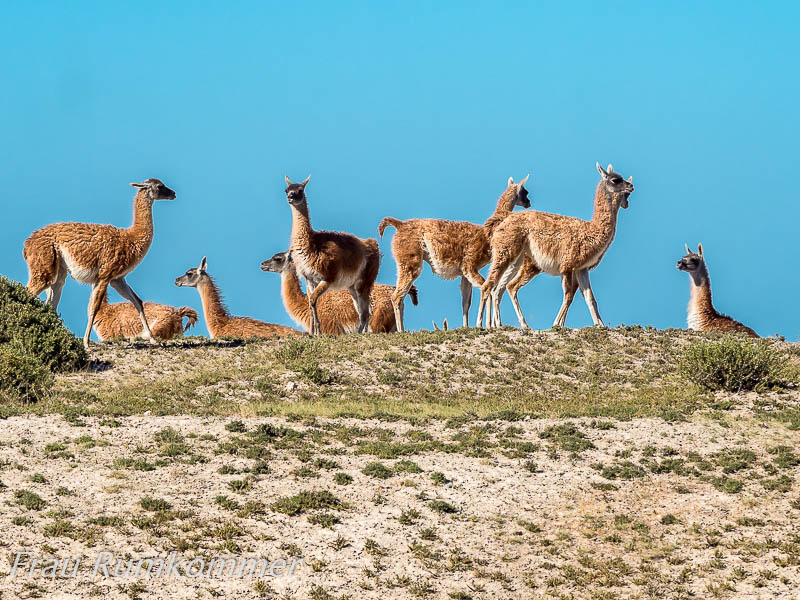
.
.
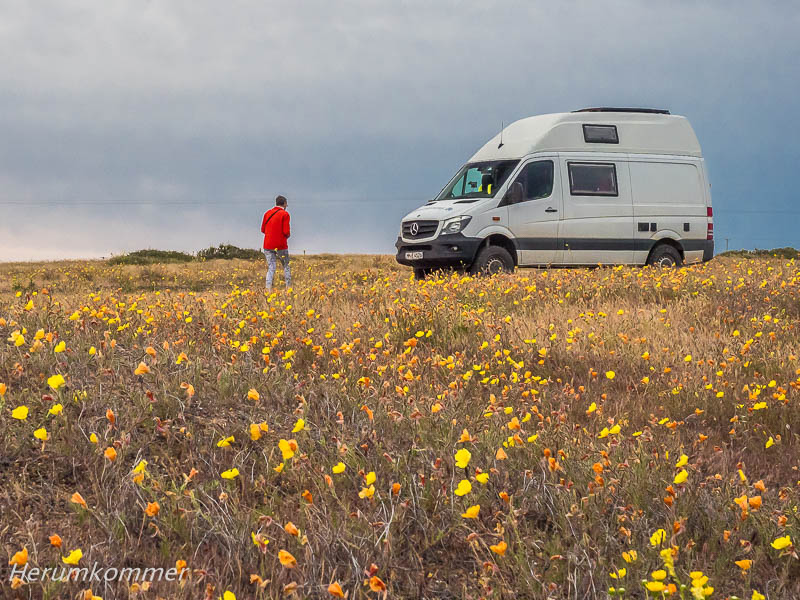
.
In ganz Argentinien ist es keine Schwierigkeit, einen Abfallbehälter für Hausmüll zu finden. Dennoch ist an vielen Stellen im ganzen Land, mit Ausnahmen, die Landschaft vermüllt. In Patagonien ist das besonders eklatant. Dort verteilt der permanente Wind den Müll über weite Entfernungen. Wir kennen Vermüllung der Landschaft aus Italien, Griechenland und Rumänien. Aber Argentinien ist schlimmer! Diese entsetzlichen Zustände gehen nicht immer, aber häufig, mit erbärmlichen Wohn- und Lebensverhältnissen in Slum-artigen Stadtteilen und Dörfern einher. Das ist für ein entwickeltes Land wie Argentinien unwürdig. Beides, vermüllte Landschaften und Slum-artige Behausungen haben wir nicht hier im Blog gezeigt, obwohl es oft nicht zu übersehen war.
Throughout Argentina, it is not difficult to find a litter bin for household waste. Yet in many places throughout the country, with exceptions, the landscape is littered. In Patagonia, this is particularly glaring. There, the permanent wind spreads the rubbish over long distances. We know landscape litter from Italy, Greece and Romania. But Argentina is worse! These appalling conditions are not always, but often, accompanied by miserable housing and living conditions in slum-like neighbourhoods and villages. This is unworthy of a developed country like Argentina. We did not show both, littered landscapes and slum-like dwellings here in the blog, although it was often not to be overlooked.
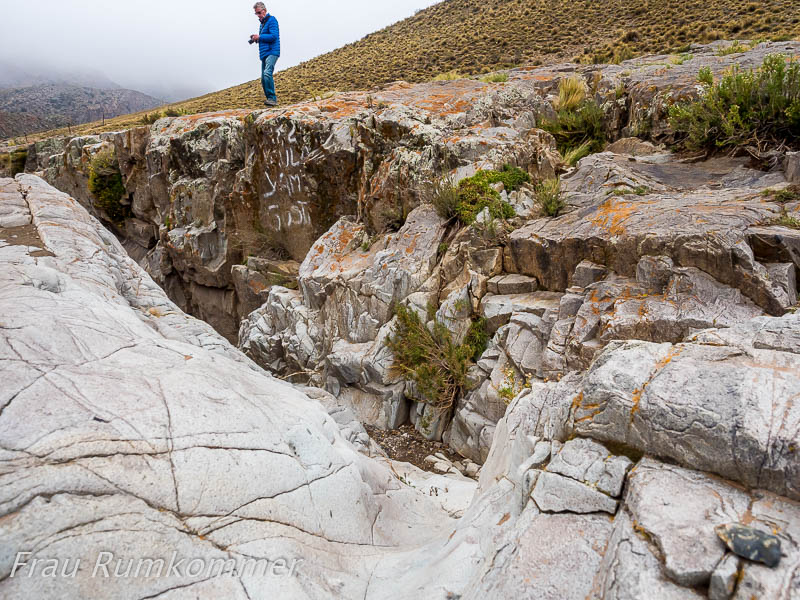
.
Wohnmobil-Reisen in Argentinien
Unsere Art zu Reisen hat in Argentinien sehr gut funktioniert. Mit der englischsprachigen App I Overlander haben wir fast überall Stellplätze gefunden. Häufig waren das großartige Plätze in der Wildnis. Auch Orte, an denen wir Frischwasser tanken konnten, haben wir mit der App gefunden. Es gibt erstaunlich viele öffentliche Wasserhähne. Auch an Tankstellen haben wir Wasser kostenlos bekommen. Viele, aber nicht alle Tankstellen haben einen Wasserhahn.
Unsere 2,7 l Propangasflaschen gefüllt zu bekommen, war nicht so einfach. Bei I Overlander haben wir Adressen gefunden, an denen Propan abgefüllt wird, darunter auch professionelle Händler. Es waren aber auch sehr rudimentäre „Etablissements“ dabei, die wir in Europa meiden würden. Letztlich haben wir immer ausreichend Propangas bekommen, erheblich einfacher, als im Nachbarland Chile.
Motorhome Travel in Argentina
Our way of travelling worked very well in Argentina. With the English-language app I Overlander, we found campsites almost everywhere. Often these were great places in the wilderness. We also found places where we could fill up with fresh water with the app. There are surprisingly many public water taps. We also got water for free at petrol stations. Many, but not all, petrol stations have a tap.
Getting our 2.7 l propane cylinders filled was not so easy. At I Overlander we found addresses where propane is filled, including professional dealers. But there were also very rudimentary „establishments“ that we would avoid in Europe. In the end, we always got enough propane gas, much easier than in neighbouring Chile.
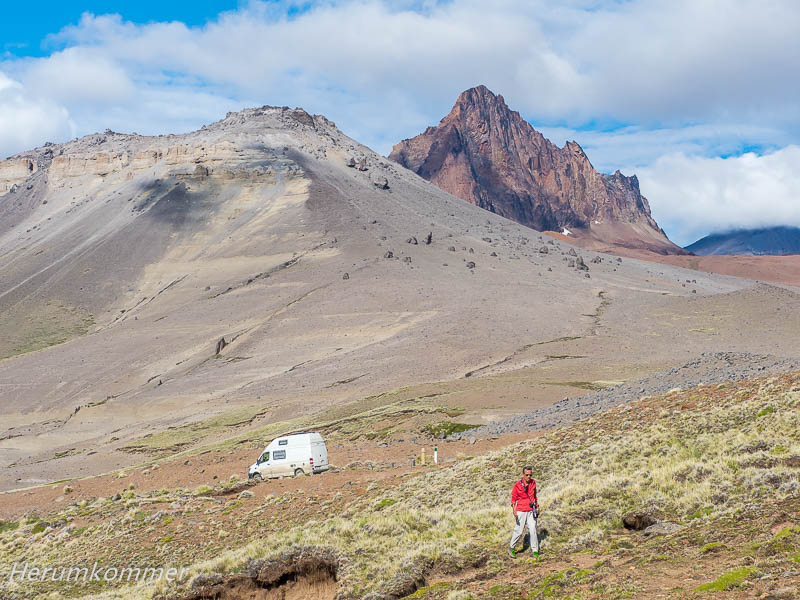
.
Offizielle nichtkommerzielle Stellplätze oder Ver-/Entsorgungseinrichtungen für Wohnmobile haben wir in Argentinien nicht wahrgenommen. Es gibt selbstverständlich kommerzielle Campingplätze, aber die haben wir nicht genutzt. Wir haben unser Klo als Trenntoilette genutzt, wie wir es in Rumänien praktiziert haben.
Viele argentinische Orte haben einen „Camping municipal“ oder „Balneario municipal“, also Gemeinde-Camping- oder Badeplatz. Gelegentlich haben wir auch „Camping provincial“ gesehen. Diese Plätze sind häufig sehr beliebt. Insbesondere an Wochenenden ist dort reger Betrieb, gern auch mit lauter Musikbeschallung bis spät abends. Grill- und Picknickplätze sind die wichtigste Ausstattung. Viele dieser Plätze haben Wasserhähne, manche auch Steckdosen. Die Sanitäranlagen sind nur selten ordentlich. Häufig sind solche Plätze einschließlich Wasser/Strom kostenlos, bei einigen sind die Gebühren gering.
In Argentinien haben wir erheblich weniger Wohnmobile gesehen, als in Europa. Zelten ist weit verbreitet. Miet-Wohnmobile haben wir nur wenige wahrgenommen. Ein bedeutender Teil davon war aus dem Nachbarland Chile, häufig Pickups (vermutlich mit Allradantrieb) mit Aufsetzkabine.
We did not see any official non-commercial pitches or supply/disposal facilities for motorhomes in Argentina. There are of course commercial campsites, but we did not use them. We used our toilet as a separation toilet, as we did in Romania.
Many Argentinian places have a „camping municipal“ or „balneario municipal“, i.e. communal camping or bathing area. Occasionally we have also seen „camping provincial“. These sites are often very popular. Especially at weekends, they are very busy, often with loud music until late in the evening. Barbecue and picnic areas are the most important facilities. Many of these sites have water taps, some also have electric sockets. The sanitary facilities are rarely decent. Often such sites are free of charge including water/electricity, at some the fees are low.
In Argentina, we saw considerably fewer motorhomes than in Europe. Tent camping is widespread. We only noticed a few rental motorhomes. A significant number of them were from the neighbouring country of Chile, often pickups (presumably with four-wheel drive) with a pop-up cabin.
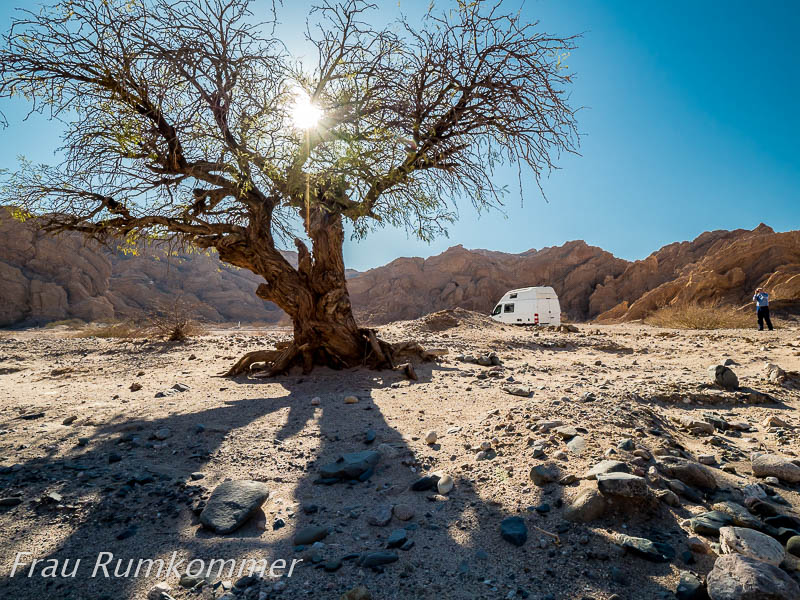
.
Lebensmittel-Versorgung
Wie üblich, waren wir als Selbstversorger unterwegs. Das beste Sortiment für die Lebensmittel-Versorgung hat die Supermarkt-Kette ‚La Anonima‘. Die ist allerdings hauptsächlich in Patagonien vertreten, darüber hinaus nur selten.
Grundsätzlich bekommt man fast alles, aber selten in einem Geschäft. Und das Angebot ist nicht so breit, wie wir es in Europa gewohnt sind. Besonders Importwaren sind kaum zu bekommen, sicherlich wegen der hohen Inflation im Land. Die deutlichen Lücken im Sortiment werden dadurch kaschiert, dass von einigen Artikeln sehr viel in den Regalen steht. Von Weizenmehl zum Beispiel gibt es mehrere Sorten und von jeder Sorte sehr viele Packungen. Vermutlich wird auf den vielen entlegenen Estancias viel selbst gebacken, denn die können sicherlich nicht regelmäßig mit Backwaren beliefert werden. Nur so ist zu erklären, dass von Trockenhefe auch 500 g – Packungen in großer Zahl angeboten werden. Dinkel- und Roggenmehl haben wir nur in Naturkostläden bekommen, gelegentlich auch Gerstenmehl.
Die Auswahl an Obst und Gemüse ist in Argentinien sehr bescheiden, die Qualität nicht nicht selten mangelhaft. Wie das übrige Sortiment auch, ist das Angebot schlechter als im Nachbarland Chile. Die Umgebung des Lago Buenos Aires ist bekannt als Anbaugebiet von Kirschen. Die haben wir zu Weihnachten in Los Antiguos direkt vom Erzeuger gekauft und darin geschwelgt. Naturkost-Geschäfte gibt es bestenfalls in größeren Städten. Deren Sortiment ist unterschiedlich, mal ganz gut, mal überschaubar. Im Vergleich zu Südamerika ist die Europäische Union das Schlaraffenland.
Grocery supply
As usual, we were self-catering. The supermarket chain ‚La Anonima‘ has the best range of groceries. However, they are mainly represented in Patagonia, and only rarely beyond that.
Basically, you can get almost everything, but rarely in one shop. And the range is not as wide as we are used to in Europe. Especially imported goods are hard to get, certainly because of the high inflation in the country. The clear gaps in the assortment are concealed by the fact that of some articles there is a lot on the shelves. Wheat flour, for example, is available in several varieties and there are many packages of each variety. Presumably, the many remote estancias do a lot of their own baking, because they certainly cannot be supplied with baked goods on a regular basis. This is the only explanation for the fact that 500 g packages of dry yeast are also available in large quantities. Spelt and rye flour we only got in health food shops, occasionally also barley flour.
The selection of fruit and vegetables in Argentina is very modest, and the quality is often poor. Like the rest of the assortment, the supply is worse than in neighbouring Chile. The area around Lake Buenos Aires is known as a cherry-growing region. We bought them at Christmas in Los Antiguos directly from the producer and indulged in them. Health food shops, at best, are in larger cities. Their assortment varies, sometimes quite good, sometimes manageable. Compared to South America, the European Union is a land of milk and honey.
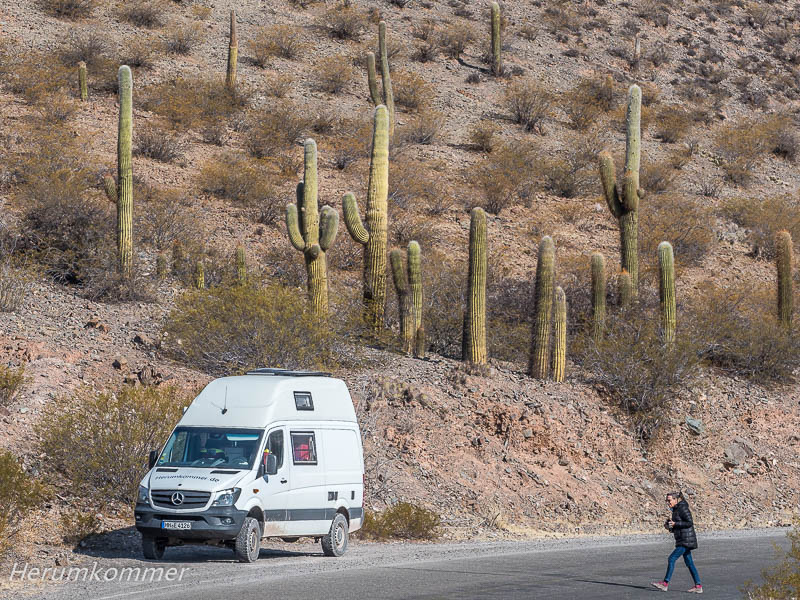
.
Argentinien für die Hälfte
Mehrmals haben wir europäische Langzeitreisende getroffen, die uns ihre besonders günstige Finanzierung der Reise in Argentinien empfohlen haben: Sie haben ein Konto bei Western Union eröffnet, auf das sie bei Bedarf von ihrem europäischen Bankkonto Geld überweisen. Dabei geben sie an, in welcher WU-Niederlassung sie den Betrag in US$ abholen wollen. Dort werden ihnen die Dollars ausgehändigt, die sie dann an Tankstellen, in Geschäften oder bei Privatpersonen gegen argentinische Pesos tauschen.
Der US$ ist in Argentinien eine Art zweite Währung. Er ist sehr stabil, im Gegensatz zum argentinischen Peso mit galoppierender Inflation. Darum ist es für Argentinier schwierig oder unmöglich, bei ihrer Bank US$ zu bekommen. Um so begehrter sind die.
Die Wechselkurse für Euro und US$ waren während unserer Südamerikareise ungefähr gleich, also grob 1:1. Vermutlich wegen seiner großen Bedeutung für die argentinische Wirtschaft war dort der US$ ungefähr doppelt so viel wert wie der Euro. Für Schweizer Franken galt Ähnliches. Mit dem oben beschriebenen Verfahren konnten die Kosten in Argentinien daher mehr oder weniger halbiert werden.
Wir konnten uns mit dem Vorgehen nicht anfreunden, obwohl es legal ist. In einigen Supermärkten gab es Aushänge mit dem jeweils aktuellen Kurs für US$, der an den Kassen galt. Allerdings haben wir auch erlebt, dass Reisende einen oder mehrere Tage warten mussten, bis die benannte Western Union – Niederlassung die Dollarscheine verfügbar hatte. Auch war es manchmal nicht einfach, ein Geschäft oder eine Tankstelle zu finden, die unsere mitgebrachten US$ ankaufen wollten.
Argentina for half
Several times we have met European long-term travellers who have recommended their particularly favourable financing of travel in Argentina: They have opened an account with Western Union to which they transfer money from their European bank account when needed. They indicate in which WU branch they want to collect the amount in US$. There they are given the dollars, which they then exchange for Argentine pesos at petrol stations, in shops or with private individuals.
The US$ is a kind of second currency in Argentina. It is very stable, unlike the Argentine peso with galloping inflation. That is why it is difficult or impossible for Argentines to get US$ at their bank. They are all the more sought after.
During our trip to South America, the exchange rates for the Euro and the US$ were about the same, roughly 1:1. Probably because of its great importance for the Argentine economy, the US$ was worth about twice as much as the Euro there. Similar was true for Swiss francs. With the procedure described above, the costs in Argentina could therefore be more or less halved.
We were not happy with the procedure, although it is legal. In some supermarkets there were notices with the current exchange rate for US$, which was valid at the cash registers. However, we also experienced that travellers had to wait one or more days until the designated Western Union branch had the dollar notes available. It was also sometimes not easy to find a shop or petrol station that wanted to buy the US$ we had brought with us.
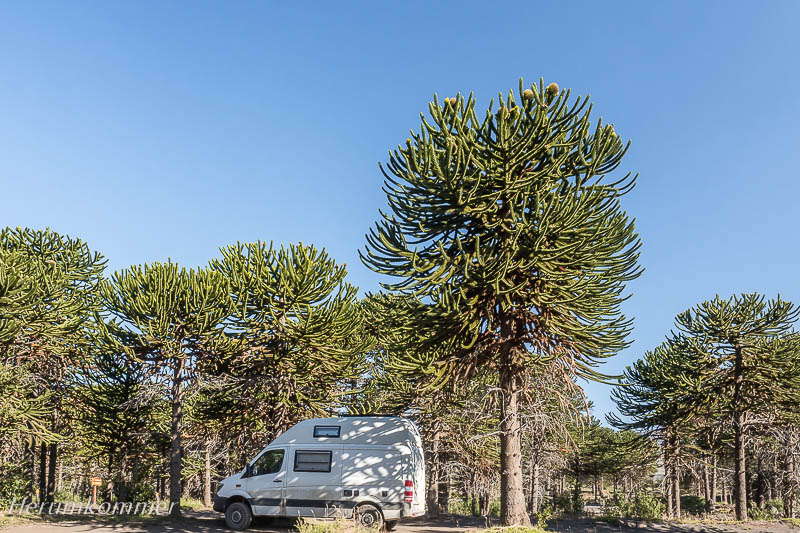
.
Nach unserer letzten Einreise von Chile nach Argentinien haben wir dann selbst eine andere, viel einfachere Methode erlebt und weiterhin genutzt, die auch zu dieser Halbierung der Kosten führt: Frau Rumkommer hat ein Girokonto bei einer Online-Bank. Die hat keine Filialen und keine eigenen Geldautomaten. Für das Girokonto hat sie eine Kreditkarte und eine Debitkarte (beide Visa) ausgegeben und trägt alle Auslandsgebühren, die beim Bezahlen mit diesen Karten entstehen. Das ist schon mal ganz angenehm. Die mit der Debit-Karte bezahlten Beträge werden sofort dem Girokonto belastet. Dabei entfällt also der Kredit-Effekt. Dem Verkäufer wird der Betrag unmittelbar auf sein Konto gutgeschrieben. In Argentinien läuft dieser Vorgang allerdings über US$. Und so wurde jeweils tatsächlich nur etwa die Hälfte des In Euro zu erwartenden Betrags vom Girokonto abgebucht. Das konnten wir stets sofort feststellen, denn die App der Online-Bank sendet unmittelbar eine E-Mail, die den überwiesenen Betrag mitteilt.
After our last entry from Chile to Argentina, we experienced and continued to use another, much simpler method ourselves, which also leads to this halving of costs: Mrs Roundgetter has a current account at an online bank. It has no branches and no ATMs of its own. It has issued a credit card and a debit card (both Visa) for the current account and pays all foreign fees incurred when paying with these cards. This is quite pleasant already. The amounts paid with the debit card are immediately debited from the current account. So there is no credit effect. The amount is immediately credited to the seller’s account. In Argentina, however, this process takes place via US$. And so, in each case, only about half of the amount to be expected in Euros was actually debited from the current account. We were always able to see this immediately, because the app of the online bank immediately sends an email informing us of the amount transferred.
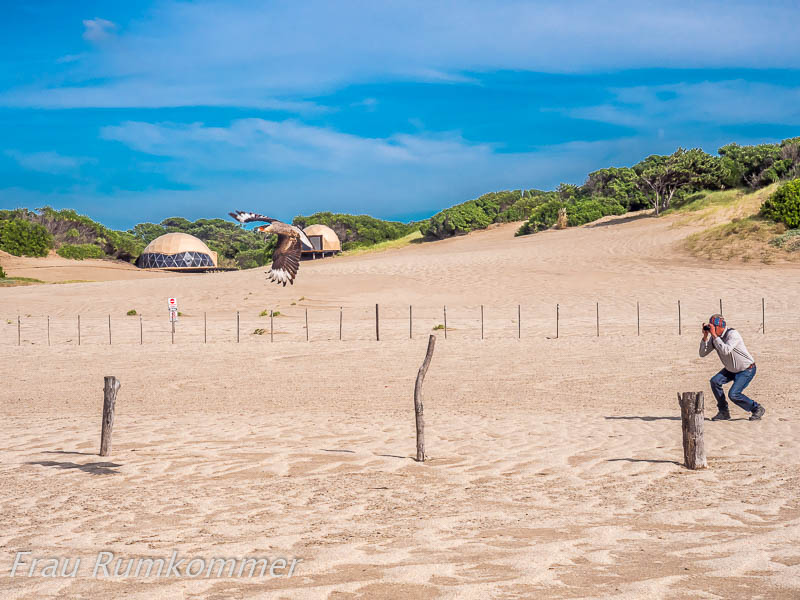
.
Grenzkontrollen
Auf der von uns gewählten Reiseroute (siehe oben) sind wir viermal nach Argentinien ein- und wieder ausgereist. Die Abfertigung an den Grenzstationen ist zwar nicht so penetrant wie die Einreise nach Chile, aber bürokratisch, rückständig und mehr oder weniger zeitaufwändig. In Europa haben wir so etwas nie erlebt, auch lange vor dem Schengen-Abkommen nicht:
- Am ersten Schalter wird die ausländische temporäre Zulassung des Fahrzeugs (in unserem Fall aus Uruguay bzw. Chile) entgegengenommen.
- Am zweiten Schalter werden die Pässe kontrolliert. Argentinien stempelt sie nicht mehr, alle Informationen sind in deren IT-Systemen. Mit der Einreise wird ein 90-Tage-Visum gewährt (dessen Ablaufdatum man sich selbst merken muss).
- Am dritten Schalter wird das Fahrzeug zolltechnisch erfasst und eine temporäre Zulassung ausgegeben. Die muss bei der Ausreise vorgelegt werden und wird eingezogen.
- Schließlich wird eventuell das Fahrzeug auf nicht erlaubte oder zu verzollende Gegenstände überprüft. Diese Checks waren erheblich lascher, als bei Einreise nach Chile.
Border checks
On our chosen itinerary (see above), we entered and left Argentina four times. The clearance at the border stations is not as penetrating as the entry to Chile, but it is bureaucratic, backward and more or less time-consuming. We have never experienced anything like this in Europe, not even long before the Schengen Agreement:
- At the first counter, the foreign temporary registration of the vehicle (in our case from Uruguay or Chile) is accepted.
- At the second counter, the passports are checked. Argentina no longer stamps them, all information is in their IT systems. Upon entry, a 90-day visa is granted (you have to remember the expiry date yourself).
- At the third counter, the vehicle is registered for customs and a temporary registration is issued. This must be presented on departure and will be confiscated.
- Finally, the vehicle may be checked for items that are not permitted or need to be cleared through customs. These checks were considerably more lax than when entering Chile.
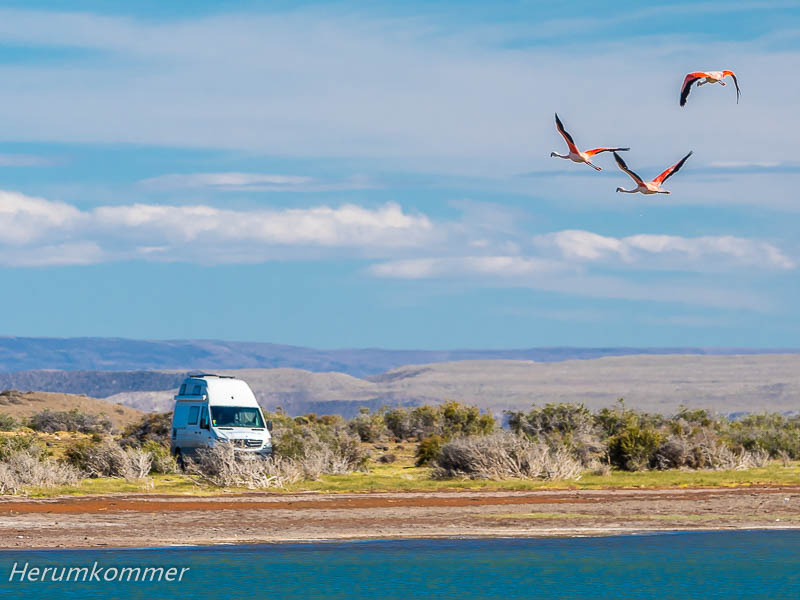
.
Orientierungshilfen
Zur Übersicht über die gesamte Reiseroute haben wir vor der Reise bei MapFox.de die Straßenkarte „South America“ von International Travel Maps gekauft. Auch von MapFox.de haben wir den „Super Atlas Argentina“ mit zusätzlichen Karten der Nachbarländer von Zagier & Urruty Publications beschaffen lassen.
Außerdem haben wir dort den Reiseführer „Argentinien entdecken entlang der Ruta 3 und der legendären Ruta Cuarenta RN 40“ von W.P. Schüller – H.A. Wagner aus dem Stefan Wagner Verlag gekauft. Dieser Reiseführer hat sich als unverzichtbare, großartige Informationsquelle und sehr konkrete Orientierungshilfe erwiesen.
Auch der Reiseführer „Argentinien mit Patagonien und Feuerland“ von Jürgen Vogt aus dem Reise Know How Verlag hat sich für uns auf dieser Reise bewährt. In unserem Garmin-Navi hatten wir die Südamerika-Karten. Mit diesem Paket sind wir gut gereist.
Guidance
For an overview of the entire itinerary, we bought the road map „South America“ from International Travel Maps from MapFox.de before the trip. Also from MapFox.de we had the „Super Atlas Argentina“ with additional maps of the neighbouring countries obtained from Zagier & Urruty Publications.
Additionally, we also bought the (german) travel guide „Argentinien entdecken entlang der Ruta 3 und der legendären Ruta Cuarenta RN 40“ (Discover Argentina along the Ruta 3 and the legendary Ruta Cuarenta RN 40) by W.P. Schüller – H.A. Wagner from Stefan Wagner Publishing House. This travel guide has proved to be an indispensable, great source of information and very concrete orientation aid.
The (german) travel guide „Argentinien mit Patagonien und Feuerland“ (Argentina with Patagonia and Tierra del Fuego) by Jürgen Vogt from Reise Know How Publishing House also proved its worth for us on this trip. We had the South America maps in our Garmin navigation system. With this package we travelled well.
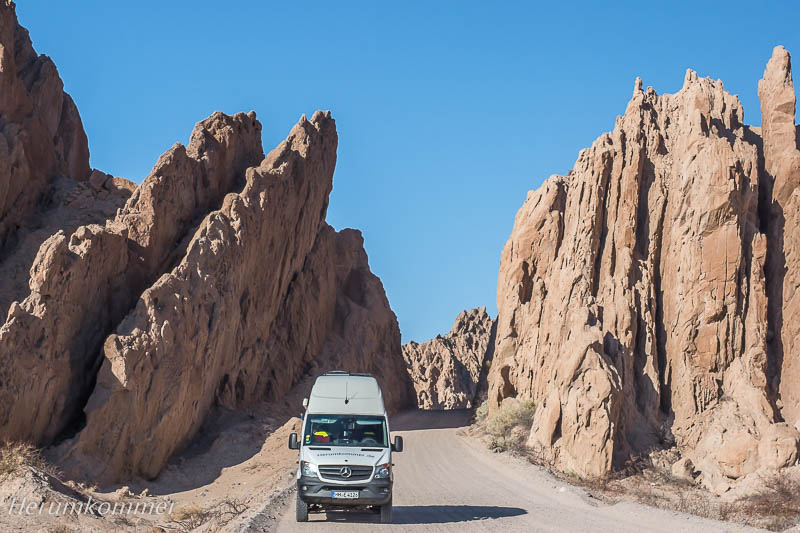
.
Hitliste
Argentinien ist ein sehr großes Land mit außerordentlich vielen herausragenden Attraktionen. Entsprechend haben wir viel Zeit in dem Land verbracht. Darum ist die Liste unserer schönsten Erlebnisse und Eindrücke (in der Reihenfolge der Reise) besonders lang:
- der längste Längswasserfall der Welt, Saltos del Moconá
- die schönsten Wasserfälle der Welt, die des Rio Iguazú
- der Chaco-Nationalpark, mit exotischer Vegetation
- das Himmelsfeld, „Campo del Cielo“, mit Meteoriten und Wellensittichen
- die historische Ruinenstadt Quilmes der indigenen Urbevölkerung
- die Halbwüste von Quilmes und die Lamas darin
- die bizarre Quebrada de las Flechas, nördlich von Cafayate
- die besonders beeindruckende Quebrada de las Conchas
- der Nationalpark Los Cardones mit Kandelaberkakteen in großer Höhe
- die farbenfrohe Quebrada de Humahuaca
- das spektakuläre Panorama des Cerro Hornocal in 4350 m
- die Passstraße Cuesta de Miranda mit grandiosen Ausblicken
- die Panoramastraße RN 150
- der gigantische Cañon del Atuel
- die weltgrößte Kolonie von Felsensittichen am Atlantik im Nordosten Patagoniens
- die zum Greifen nahen Wale am Golfo Nuevo
- das Naturreservat Halbinsel Valdés mit Nandus und Guanako-Herden
- die Pinguine, See-Elefanten und Seelöwen auf der Halbinsel Valdés
- die zweitgrößte Festlandkolonie von Magellan-Pinguinen am Cabo Dos Bahias
- der versteinerte Wald im Parque Nacional Bosques Petrificados de Jaramillo
- der abwechslungsreiche Küsten-Rundweg, „Circuito Costero“, bei Puerto San Julián
- der Monte León Nationalpark mit Seelöwen sowie Pinguinen und deren Küken
- der Vulkankrater mit der Laguna Azul im Süden Patagoniens
- der Sturm gepeitschte Lago Fagnano in Feuerland
- die südlichste Stadt der Welt, Ushuaia, mit Beagle-Kanal
- der Feuerland Nationalpark mit dem Ende der Straße und Märchenwald
- der grandiose Perito Moreno Gletscher im Südwesten Patagoniens
- El Chaltén mit dem FitzRoy-Massiv und schönen Wanderwegen
- die Tour zum Lago del Desierto und die Wasserfallroute
- die beeindruckende Höhle der Hände, „Cueva de las Manos“
- alle vier Tagesetappen der Straße 41 der Provinz Santa Cruz
- die fremdartigen Araukarien-Wälder im Parque Nacional Lanín
- die vulkanischen und Sediment-Strukturen am Vulkan Tromen, West-Patagonien
- das Land der Vulkane, „Tierra de Volcanes“, mit dem Canyon La Pasarela
- die Straße der 365 Kurven, Ruta Provincial 52, nach Uspallata
- der 3200 m hohe Bermejo-Pass über die Anden nach Chile
- die großen Salinen, “Salinas Grandes“, im Nordwesten Argentiniens
- die „lost places“ Puente Viejo und Hidroelectrica del Sud
- der verzauberte Wald, „El Bosque Encantado“
- die Laguna Lobos mit Bilderbuch-Himmel, Wasservögeln und Vollmond
- der Nationalpark El Palmar mit Capybaras
Damit ist der Bericht von unserer Reise durch Argentinien abgeschlossen.
Frau Rumkommer präsentiert ihre besten Fotos aus Argentinien auf ihrer persönlichen Foto-Internetseite krim-gruettner.de. Der Herumkommer hat auch in Argentinien einige Leuchttürme für seine Sammlung fotografiert, die sind unter reinhardprinzmeier.de zu finden.
Diese Reise ist aber noch nicht zu Ende. Von Argentinien aus sind wir wieder nach und durch Uruguay gereist.
Hit list:
Argentina is a very large country with an extraordinary number of outstanding attractions. Accordingly, we spent a lot of time in the country. That is why the list of our most beautiful experiences and impressions (in the order of the trip) is particularly long:
- the longest longitudinal waterfall in the world, Saltos del Moconá
- the most beautiful waterfalls in the world, those of the Rio Iguazú
- the Chaco National Park, with exotic vegetation
- the sky field, „Campo del Cielo„, with meteorites and budgerigars
- the historic indigenous peoples’ ruined city of Quilmes
- the semi-desert of Quilmes and the llamas in it
- the bizarre Quebrada de las Flechas, north of Cafayate
- the particularly impressive Quebrada de las Conchas
- Los Cardones National Park with candelabra cacti at great heights
- the colourful Quebrada de Humahuaca
- the spectacular panorama of the Cerro Hornocal at 4350 m
- the pass road Cuesta de Miranda with magnificent views
- the panoramic road RN 150
- the gigantic Cañon del Atuel
- the world’s largest colony of rock parakeets at the Atlantic Ocean in north-eastern Patagonia
- the whales, close enough to touch, at Golfo Nuevo
- the Valdés Peninsula Nature Reserve with nandus and herds of guanacos
- the penguins, elephant seals and sea lions on the Valdés Peninsula
- the second largest mainland colony of Magellan penguins at Cabo Dos Bahias
- the petrified forest in the Parque Nacional Bosques Petrificados de Jaramillo
- the varied coastal circuit, „Circuito Costero„, near Puerto San Julián
- Monte León National Park with sea lions as well as penguins and their chicks
- the volcanic crater with the Laguna Azul in southern Patagonia
- the storm-swept Lago Fagnano in Tierra del Fuego
- the southernmost city in the world, Ushuaia, with the Beagle Channel
- Tierra del Fuego National Park with the end of the road and fairytale forest
- the magnificent Perito Moreno Glacier in southwestern Patagonia
- El Chaltén with the FitzRoy massif and beautiful hiking trails
- the tour to Lago del Desierto and the waterfall route
- the impressive cave of the hands, „Cueva de las Manos„
- all four daily stages of road 41 in the province of Santa Cruz
- the strange Araucaria forests in the Parque Nacional Lanín
- the volcanic and sedimentary structures near the Tromen Volcano, Western Patagonia
- the land of volcanoes, „Tierra de Volcanes„, with the canyon La Pasarela
- the road of 365 curves, Ruta Provincial 52, to Uspallata
- the 3200 m high Bermejo Pass across the Andes to Chile
- the large salt flats, „Salinas Grandes„, in the northwest of Argentina
- the „lost places“ Puente Viejo and Hidroelectrica del Sud
- the enchanted forest, „El Bosque Encantado”
- Laguna Lobos with picture-book skies, water birds and full moon
- El Palmar National Park with Capybaras
This concludes the report from our trip through Argentina.
Ms Roundgetter presents her best photos from Argentina on her personal photo website krim-gruettner.de. The Aroundgetter photographed some lighthouses in Argentina for his collection, which can be found at reinhardprinzmeier.de.
But this journey is not over yet. From Argentina we travelled again to and through Uruguay.
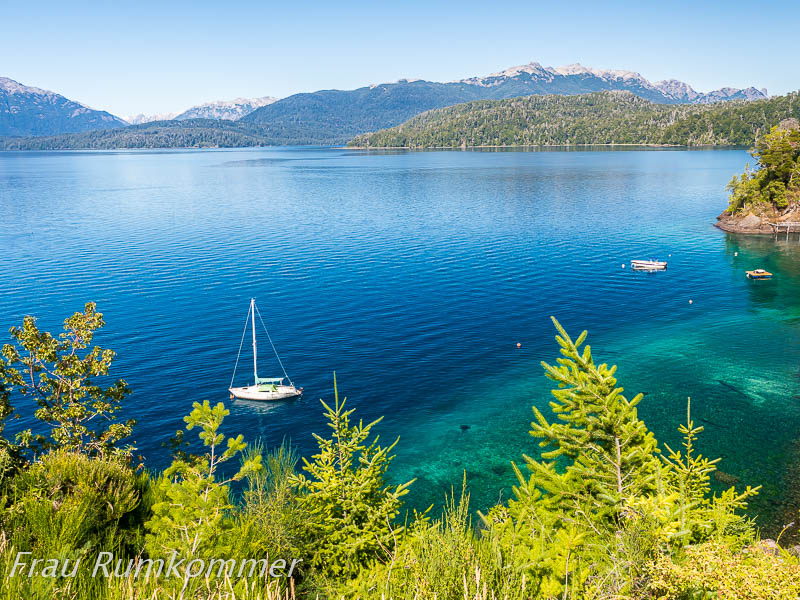
.
Argentinien mit unserem Womo Read More »